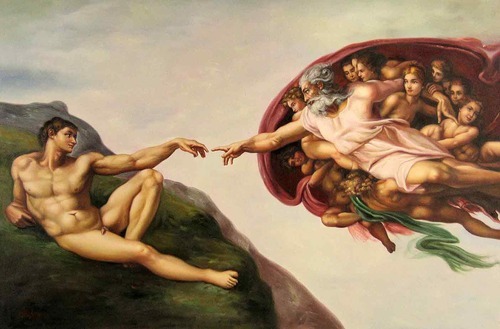“pixels vs. picture”

Grenz and Olson, in their book “Who Needs Theology?” introduce arguments for studying theology. They also present some of the arguments that have been used against theology, such as the “Killjoy Objection.” The authors present a scale from Folk Theology to Academic Theology and discuss the theologies in between these extremes; as well the intricacies of dogma, doctrine and opinion. They cite valuable historical information and include humor from Peanuts’ comics. Overall, I enjoyed this written discussion of theology.
While reading I kept returning to a concept I have taught in my own religious studies classes. It is what I call the “Pixel vs. Picture” concept. I will explain this in a moment. I also thought about a quote by the astronomer, Carl Sagan, which says, “The beauty of a living thing is not the atoms that go into it but the way those atoms are put together.” In a way, this is what theology does. It looks at the “atoms” of dogma, doctrine and opinion, adds in a little historical context, and engages the essence of God. It is not just an exercise of knowledge but also a practice. The physicist Richard Feynman, commenting on the “nature of nature” says, “…you’ve got to stop and think about it, about the complexity to really get the pleasure.” Why am I using scientists’ quotes to describe theology? I really don’t know. These quotes just came to mind. But I think they help explain theology. There is pleasure in the complexity of the study of God. Not only is study inherently pleasurable, but the results can be as well. As I told one of my students, who told me he felt guilty for questioning his faith, “God gave us a brain. It honors God for us to use it.”
It is natural for us to ask questions. My four year old nephew is learning about space and planets. He recently asked his Mom if there was a God for each planet. Wow! He is already a theologian. He is asking about the details. He is curious about the pixels within the picture.
The “Pixels vs. Picture” concept is a framework for analysis. The pixels are the details. For example, let’s apply this concept to “The Creation of Adam” found in the Sistine Chapel. The “pixels” include the unique colors, the style, the time period, the historical significance, the theology detailed in images, and the brushstrokes of Michelangelo. The picture is “the big picture.” It includes the experience one has when looking at this majestic fresco. It doesn’t require explanation; it just is. And by being itself alone, it can inspire a moving experience for the viewer. The “pixels” of theology help us experience the “picture.” There is beauty in the details; and yet the beauty exists without analysis. God is. Theology takes this statement and allows humans to practice their natural tendency of curiosity – the hows, the whys, the what ifs.
Theology gives us the pixels of a glorious life in which we can “live, move and have our being” in God.
Leave a Reply
You must be logged in to post a comment.